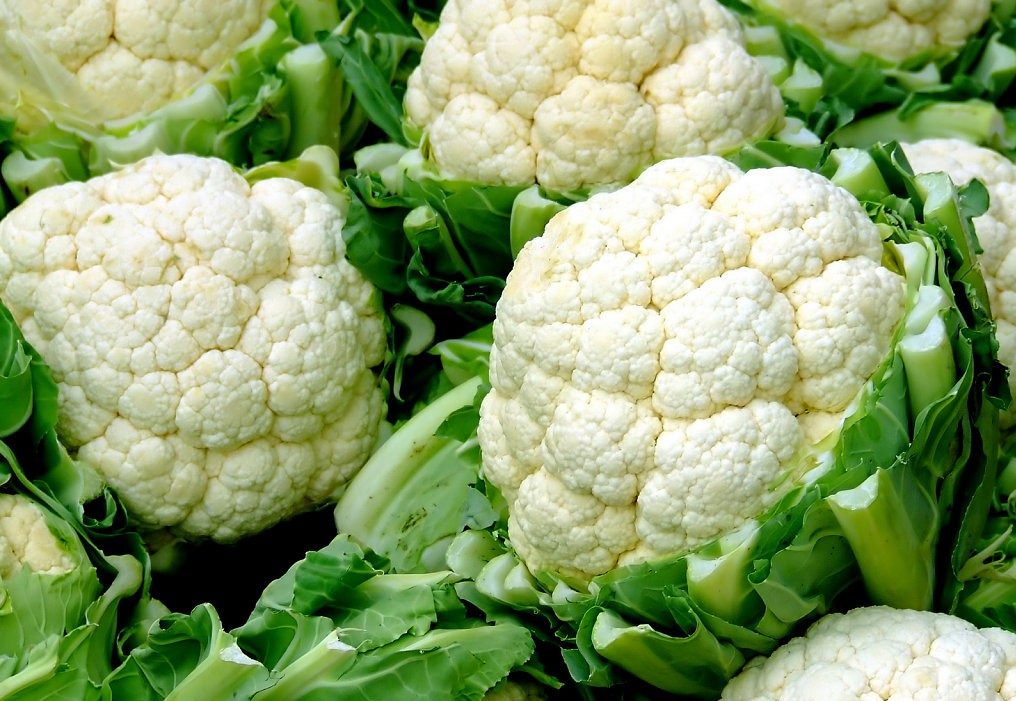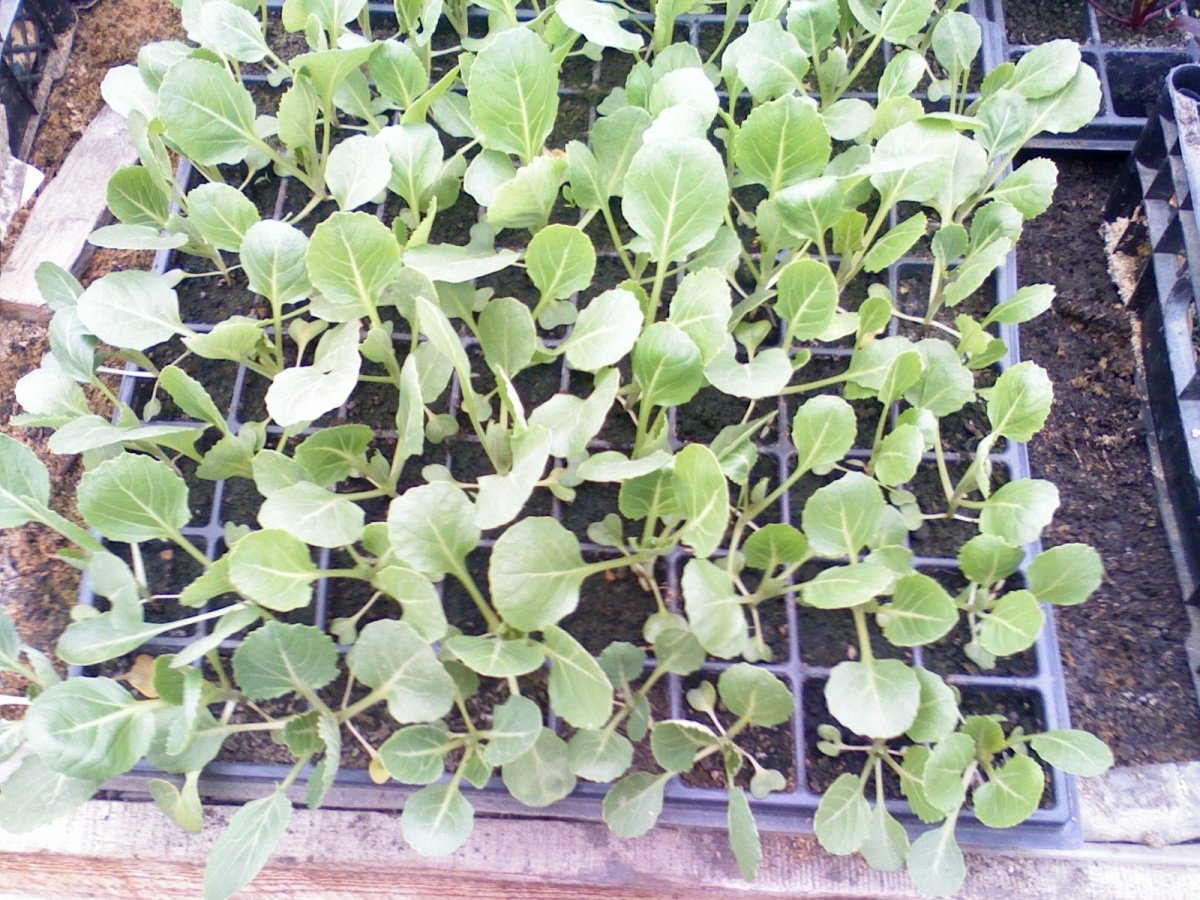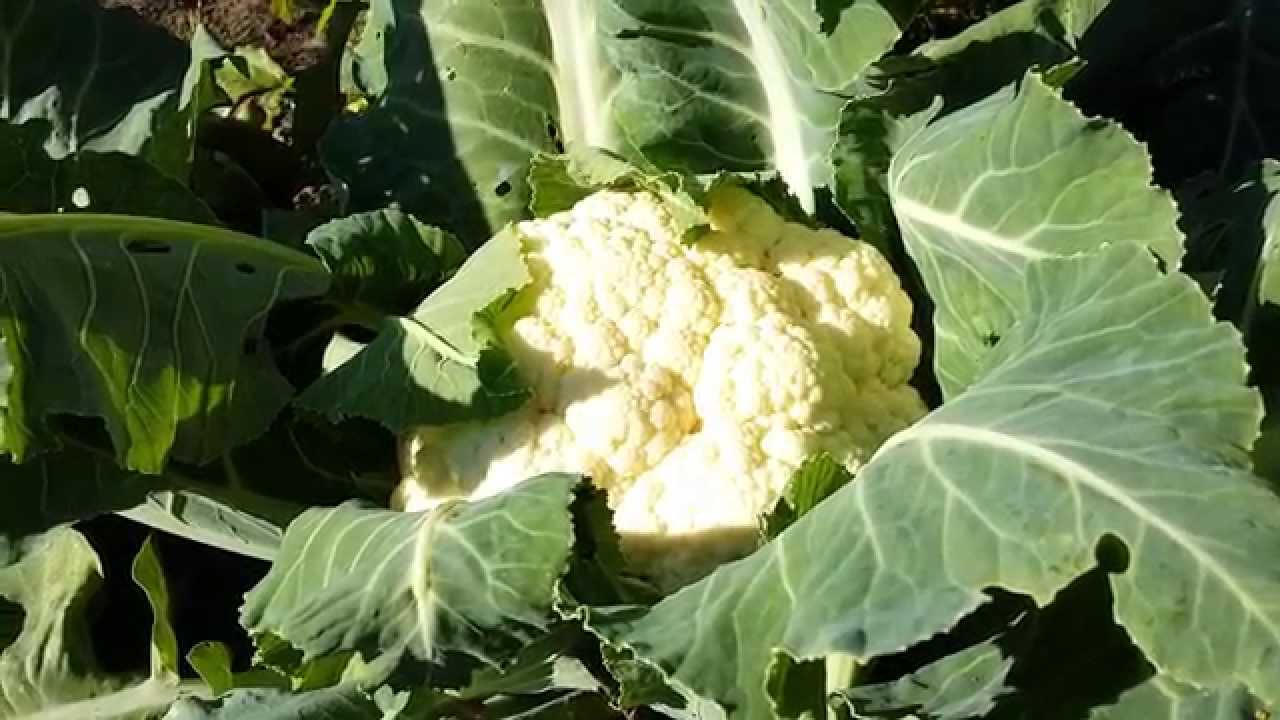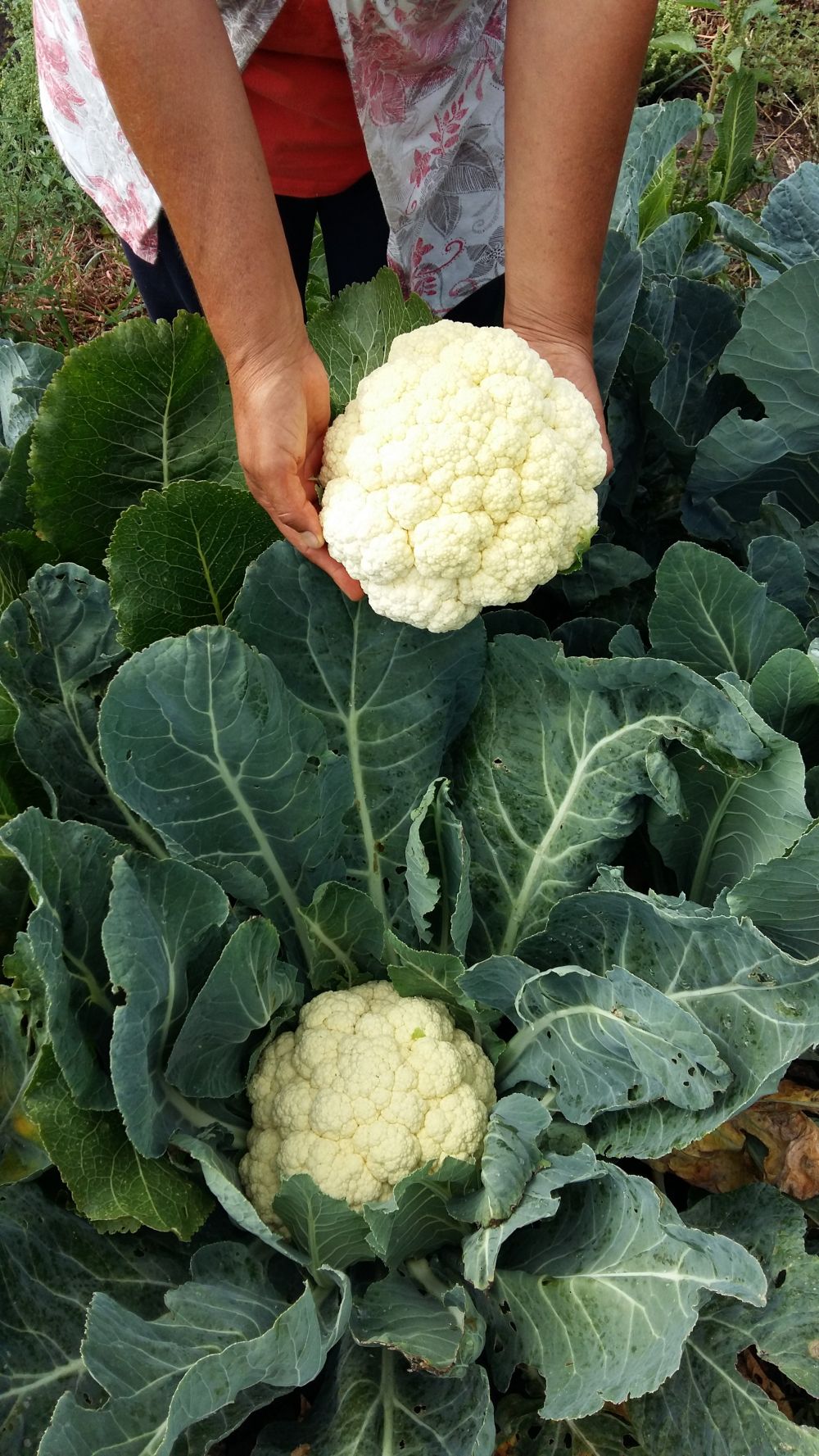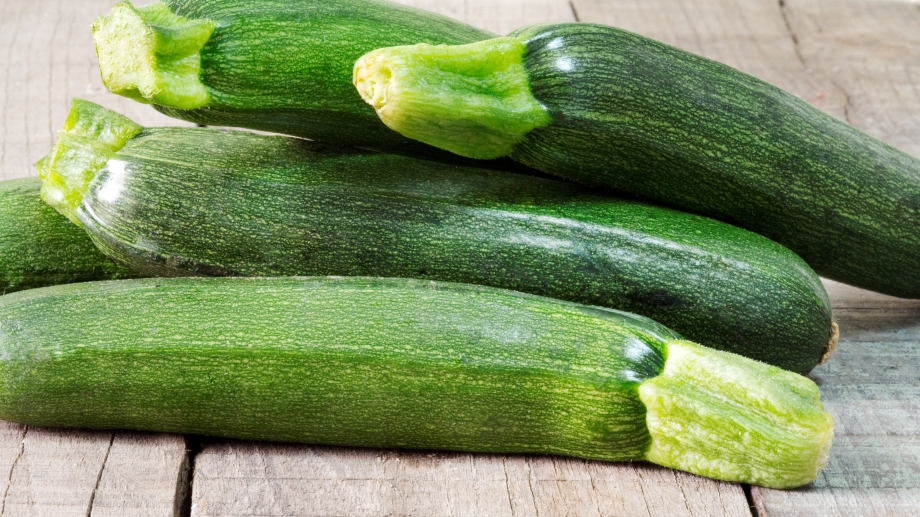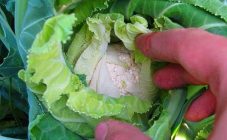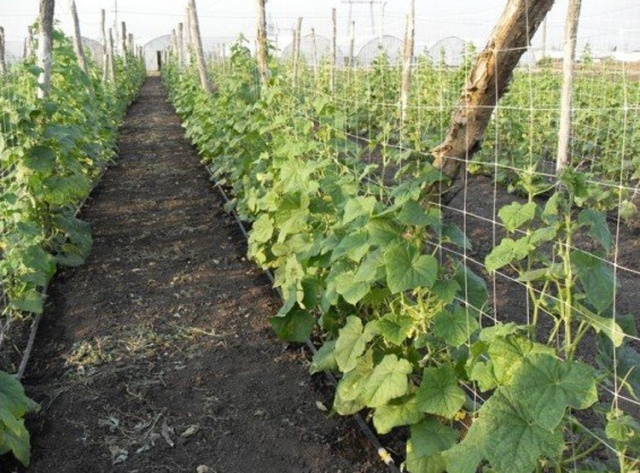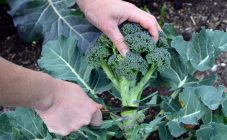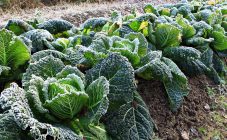Content:
Cauliflower is an annual crop. The root is located near the surface of the earth. The stem height is 20-70 centimeters. The head consists of the upper part of the stem, which is overgrown and is in the transitional phase to flowering. The head can be of the following colors: white, yellow, purple. The leaves are directed upward and curved in a spiral shape. The number of leaves on a plant is from 15 to 20 pieces. The formation of the head begins when the plant already has 10-12 leaves.
Agrotechnics
The culture is resistant to frost and light-requiring. Thus, it can be planted in the Urals, Siberia and the Leningrad region. Consider growing cauliflower outdoors.
In order to grow cabbage in the country, they use seeds or seedlings. With the help of seeds, cabbage can only be grown in regions with a warm climate, because the culture loves warmth. The soil is watered before planting and pits are made 2 centimeters deep. The distance between the seeds is 60 centimeters, between the rows - 30.
Mid-season seed varieties are planted in mid-spring (late April-early May), planting occurs after 40 days.
The term for planting late seeds is the end of spring, plants are planted in open ground at the age of 35 days.
Growing cauliflower in the Moscow region
Consider growing and caring for cauliflower outdoors in the Moscow region. In the Moscow climate, it is preferable to grow early and medium-term crops. It is important to make the right choice of seed variety. Planting method - using seedlings.
It is best to sow seeds immediately in separate pots, since problems with the development of the root system are not uncommon.
Cabbage planting and care in the open field
After planting, the plant needs sun protection for the first few days. After two weeks, the seedlings are ready for feeding and hilling. Diluted mullein and ash are used as fertilizers. Ash has not only fertilizing properties, but also eliminates parasites. Ash is consumed in the calculation - one glass per square meter.
The plant should also be sheltered from the sun in hot weather (at temperatures above 25 degrees), since it can begin to bloom early, and also get burned. Shelter can be made from cabbage leaves.
The crop should be watered frequently and abundantly. To retain moisture in the soil for a long time, it must be loosened. For the same purpose, cover the soil under the head of mulch.
The first fertilization (mullein is used as a top dressing) is done two weeks after planting the seedlings. Two weeks should pass before the next top dressing. Ash and nitrophoska are used here. During the period when the heads of cabbage begin to set, the following fertilizers are applied: superphosphate, nitrate (ammonium) and potassium fertilizers.
Cauliflower diseases
Cauliflower may rot, turn yellow or dry out during growth. These problems arise from various diseases.
Alternaria is characterized by the appearance of dark spots on the leaves. Often this fungal disease manifests itself in the summer, when it is hot and humid. To combat alternaria, fungicides are used (Bordeaux liquid, copper sulfate and others).
Another fungal disease is ring spot. Dots appear on the leaves and stems, then they increase, leading to yellowing of the leaves. Also, the disease affects the head. It is treated with fungicides. If there is no result, then the culture is removed from the site, and the site is disinfected.
The plant is prone to fungal jaundice. The infection blocks the vascular system of the plant, and because of this, deformation of the head occurs, followed by its death. For treatment, Fundazol or Fitosporin-M is used.
When waterlogged, rot appears on the plant. The disease also appears with mechanical damage. With a high degree of damage, the plant is cut off and cleaned of rot.
Keel disease affects the roots and blocks the supply of nutrients. A solution of dolomite flour and ash will help against this disease. For prevention, gardeners recommend using hydrated lime when planting.
In addition to the diseases considered, there are others: peronosporosis, black leg.
Growing cauliflower in different regions
Cultivation of cauliflower in the Urals is preferable to seeds directly into the ground. Planting takes place from mid to late May. The beds are covered with foil.
The Leningrad climate is characterized by short and cool summers. The most suitable planting method is seedlings. Early varieties should be chosen. The area is characterized by rainfall, so frequent watering is not required. The cultivation of beds for culture is carried out in the fall. The planted plants are watered at the root, the water temperature is 10 degrees.
Cauliflower is frost-resistant, but not long-term. For this reason, it is possible to grow it in the Siberian climate. For this region, the plant is cultivated with seedlings, and planting on the garden is carried out in the middle of summer. The peculiarity of growing is using a cold nursery. A wooden box that has no bottom serves as a breeding ground. The box is placed on the prepared bed and covered with a film or frame with glass, which can be opened.
Tips & Tricks
Cauliflower is suitable for storage in a cellar. To do this, it is recommended to dig up the vegetable along with the root in the fall. In the cellar, they are stored either in a state suspended downward, or the root is buried. The shelf life in this way is 3 months.
To repel pests, it is recommended to spray the seedlings with a vinegar solution. The solution is made at the rate of 10 liters of water 1 tablespoon of vinegar.
The secret of a good harvest of cauliflower, according to agronomists, lies in planting crops in places where cereals or melons and gourds previously grew (zucchini, squash, pumpkin). You can also plant on beds of tomatoes, potatoes, beets, onions, cucumbers and legumes. The place where cabbage, rutabaga, radish, radish, turnip grew before is not suitable.
